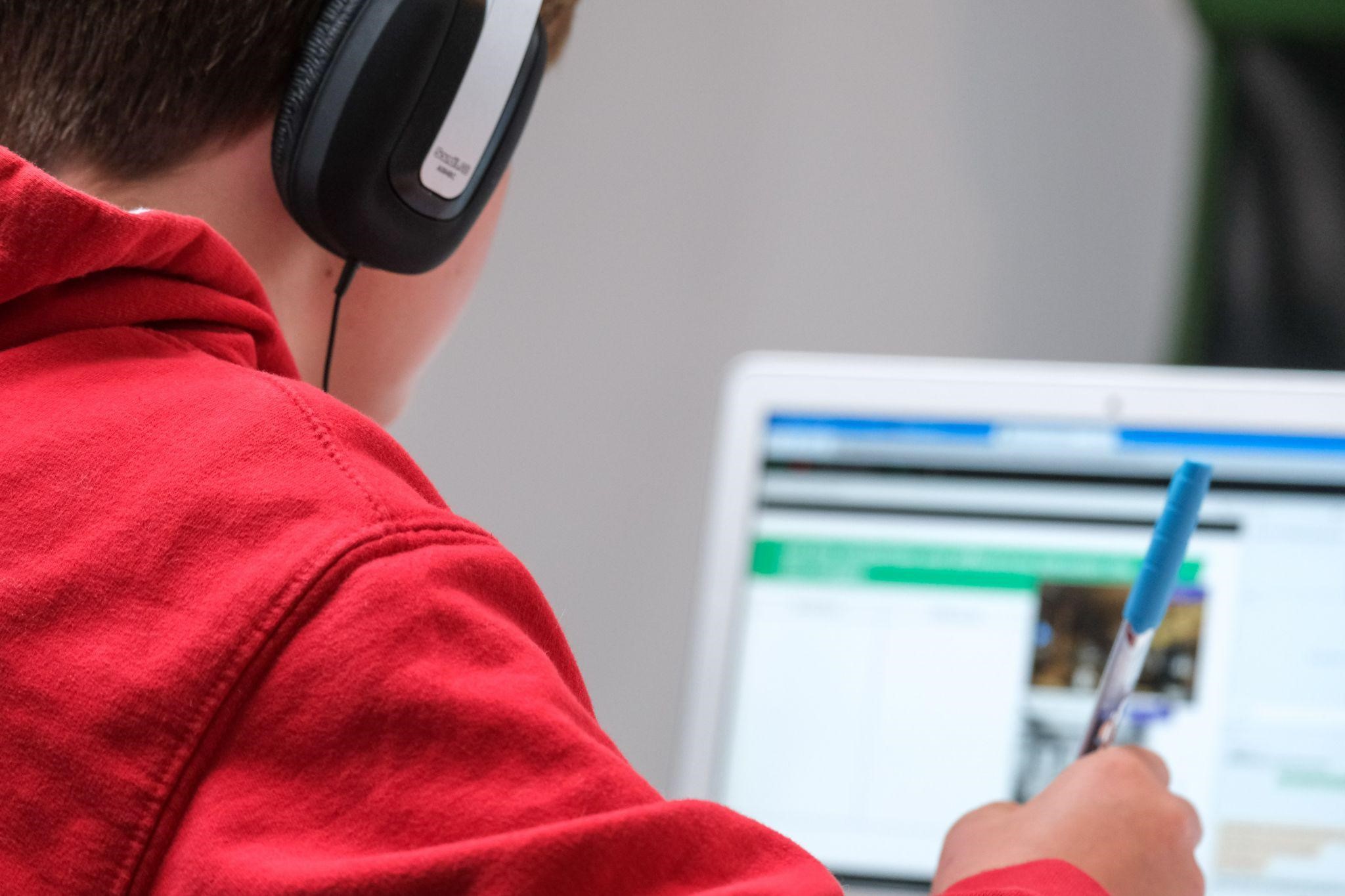
Choosing a learning device for your kid can be tricky. On the one hand, you want your child to have access to all the assistive technology they may need. On the other hand, you don’t want to get the wrong device that may distract them.
When it comes to teaching math for kids, you must choose a device that offers them the best of both worlds: assistive learning without distractions. So how exactly can you achieve this? If you’re struggling with choosing the right device for learning for your kid, this article will guide you through the process. Let’s get down to brass tacks, shall we?
Why Does Your Child Need a Learning Device?
You’re probably wondering if your child needs a learning device at all. So far, there have been several schools of thought on the subject. While some people think that screens are a huge no-no for children, others believe that these devices can be really beneficial for learning when used properly.
Frankly, although digital devices may be distracting, they still make learning more accessible and are a core part of modern education. If you’re in doubt about the validity and essence of learning devices, here are some reasons why they’re beneficial:
Access to more information
The internet is more than just a vast hub where we can find deep-dark secrets and uncomfortable ads. It holds a wealth of information and provides children with all the knowledge they need to succeed.
Previously, children could only learn from their parents, teachers, and immediate community under traditional education. While this may have worked for a while, it was extremely limiting, especially for avid learners. Fortunately, digital learning devices provide children with so much more learning gateways.
For starters, they can use the internet and search engines to gain access to more information. Educational apps, games, and YouTube videos also offer pathways for learning and are less restrictive than traditional learning.
Problem-solving skills
Everyone needs problem-solving skills as we navigate through life. When it comes to work and our personal lives, we apply problem-solving skills to situations that pop up more often than not. There’s a new project at work that needs solving? Problem-solving skills to the rescue. Need to sort out your finances? You’ll certainly need problem-solving skills to do that.
Fortunately, using interactive educational games and websites can help children develop problem-solving skills. As they strive to pass each level and get to the next one, they’ll learn to think critically and make the right decisions to solve each problem. In fact, using devices alone (without games or websites) can make them more adept at solving problems since they’ll constantly be navigating basic problems such as connection issues.
Hand-eye coordination
Although most children tend to develop motor skills as they grow, hand-eye coordination difficulty is more common than we imagine. Children with poor hand-eye coordination will find it difficult to play sports or may have messy handwriting.
Fortunately, some educational games can help your child develop hand-eye coordination. For instance, games that require you to follow objects and interact with them can help improve this motor skill. Similarly, several studies have discovered that the use of touchscreens on learning devices can boost hand-eye coordination and visual attention.
Factors to Consider When Choosing a Learning Device for Your Child
So you’re ready to get a learning device for your child. How do you ensure that you choose the right device that offers great value for your money? If you’re stuck in this puzzle, here are a few factors to guide your purchase decision:
Does it offer productivity?
Let’s face it: there’s already an age-long debate about how digital learning devices may be distracting. This theory holds some water to a large extent, especially when children are left with no supervision or balance. As such, it’s essential to choose a learning device that maximizes productivity for your child.
For instance, a productivity-friendly learning device should be able to open multiple windows of an app or let you work within two Word documents at the same time. In the same vein,if you’re getting your child a tablet or any similar device, it should also be able to limit screen time on non-academic related apps. This way, your kid can spend less time on chaff and more time acquiring new knowledge.
Navigation and your child’s familiarity with technology
We get it: you’re really excited at the thought of getting your child a learning device that will boost their academic life. But just how familiar is your child with technology? Are they digital whizzes or do they struggle with advanced technology? When it comes to choosing a learning device, it’s important to take your child’s experience with digital tools into consideration. If they lack experience, it might be best to go for tools that offer ease-of-use.
In the same vein, when scouting for a learning device, ease-of-use, navigation, and a low learning curve should rank high on your criteria list. You certainly don’t want your child to spend ages figuring out how to use the tool. In fact, if the technology is too complex or advanced, they’d probably dump it for something more entertaining.The more intuitive and user-friendly a learning device is, the more likely that your child is going to learn with it.
Relevance to their personal and academic needs/interests
Another key factor to consider when choosing a learning device for your kid is its relevance to their academic needs. Every child has different needs and it’s important to learn what your child’s struggles are before making a purchase decision. For instance, if your child is struggling with writing, you might want to get them a tablet with a stylus that lets them play with their imagination and practice their writing. In the same vein, if your child is having issues with learning math, you might want to invest in a device with a large processor for downloading educational games.
It’s also important to consider the device’s relevance to your child’s current academic level and curriculum. A Grade 1 student would not need a PC but a highschool student certainly will.
Accessibility
Accessibility is yet another core factor to consider when choosing the right learning device for your child. How accessible is the device you’re considering? Does it let users personalize the user interface to suit their needs and preferences? Does it make adjustments for language differences and other barriers?
If your child has disabilities or special needs, then an accessible learning device is non-negotiable. You want a device that can be customized to meet their specific needs and doesn’t pose any hindrance to learning. For instance, some devices come with in-built accessibility features such as text-to-speech, transcription, and sensory-aiding features. This way, children can learn seamlessly regardless of their disabilities.
Security and parental control
Although learning devices have their perks, they’re mainly still technological tools at the end of the day. As parents in today’s digital world, you want your child to be able to access the internet without falling prey to predators, cyberbullies, or content that aren’t child-friendly.
As such, when choosing a learning device, it’s essential to consider its parental control settings. Can you actively monitor your child’s usage of the device? Does it let you limit the apps your child can access? If a learning device offers adequate parental control options, then it’s certainly worth considering.
Cost/ Budget
A lot of us tend to get awkward when it comes to talking about money. However, cost is an essential factor to consider when choosing any learning device. How much can you afford to pay for a new device? If you’re working with a tight budget, you may need to go for simple, older models that don’t cost a lot of money. Alternatively, you may also be able to find used devices in good conditions for lower prices.
How to Balance Your Child’s Use of Learning Devices
As a parent, there’s a teeny chance you’re worried that your kid might get addicted to technology. Whilst this fear is completely valid, there are ways to regulate your child’s use of technology and ensure that they don’t get addicted.
For starters, you could carve out time for physical activities and traditional learning each day. For instance, instead of your child spending three hours reading on a learning device, you could split it equally. An hour and a half where you read aloud to them and the leftover time can be spent on the device.
In the same vein, ensure that they understand the importance of maintaining a healthy balance between screen time and the real world. This way, they’d be able to take the initiative in their own instead of you having to complain about their screen time.
Final Thoughts
Choosing the right learning device for your child is a complex process that requires a lot of careful consideration. Fortunately, with these tips outlined above, you’re well on your way to making the right choice. Good luck!






